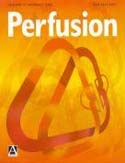Bubbles and Bypass: An Update

Bubbles in the bloodstream are not a normal condition – yet they remain a fact of cardiopulmonary bypass (CPB), having been extensively studied and documented since its inception some 50 years ago. While detectable levels of gaseous microemboli (GME) have decreased significantly in recent years and gross air embolism has been nearly eliminated due to increased awareness of etiologies and technological advances, methods of use of current perfusion systems continue to elicit concerns over how best to totally eliminate GME during open-heart procedures. A few studies have correlated adverse neurocognitive manifestations associated with excessive quantities of GME. Newer techniques currently in vogue, such as vacuum/ assisted venous drainage, low-prime perfusion circuits, and carbon dioxide flooding of the operative field, have, in some instances, exacerbated the problem of gas embolism or engendered secondary complications in the safe conduct of CPB. Doppler monitoring (circuit or transcranial) primarily remains a research tool to detect GME emanating from the circuit or passing into the patients’ cerebral vasculature. Newer developments not yet widely available, such as multiple-frequency harmonics, may finally provide a tool to distinguish particulate microemboli from GME and further delineate the clinical significance of GME.
